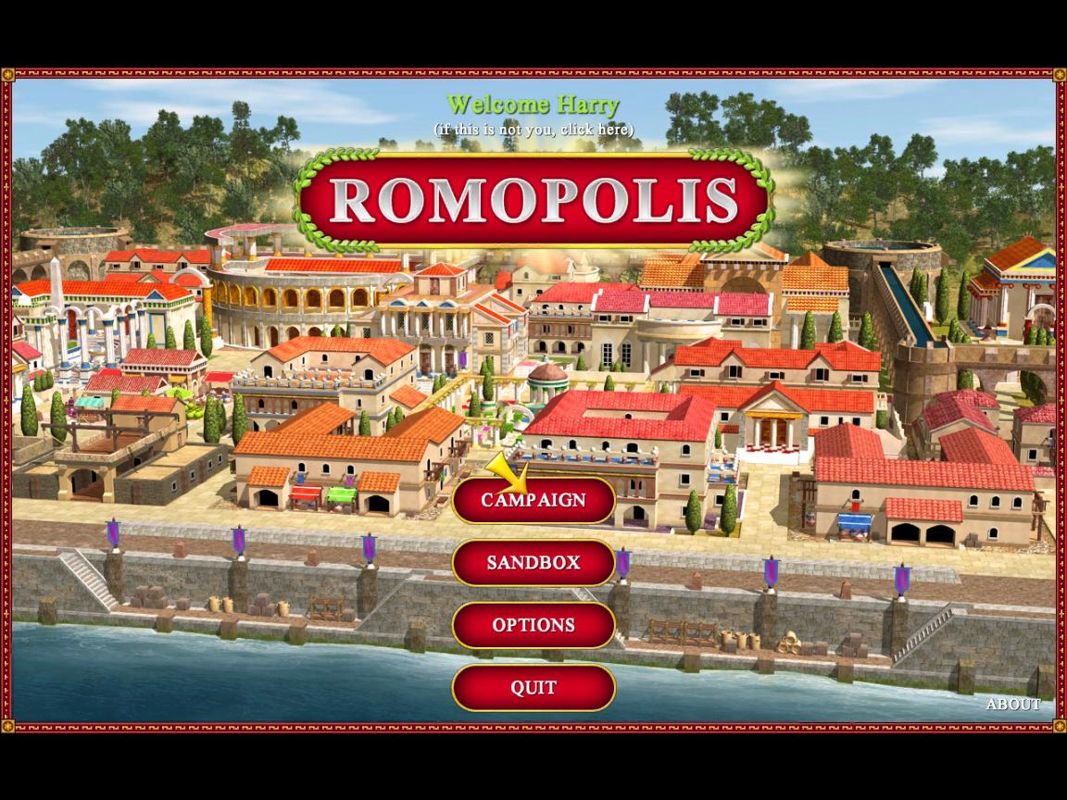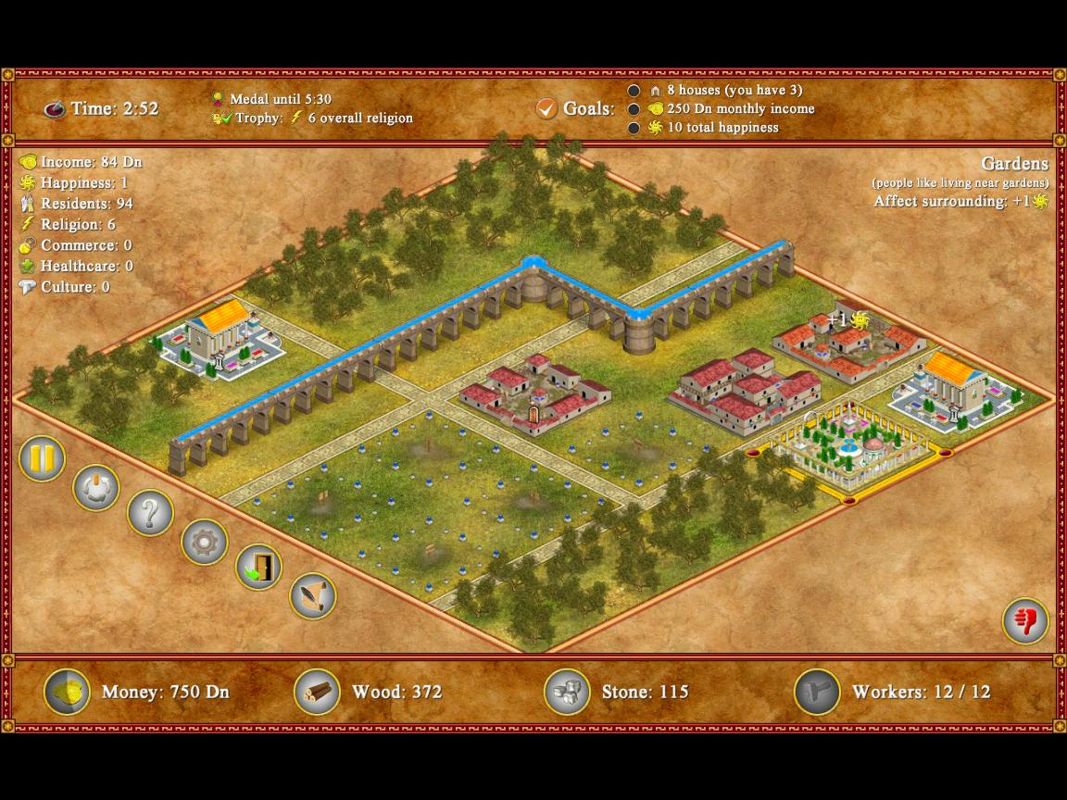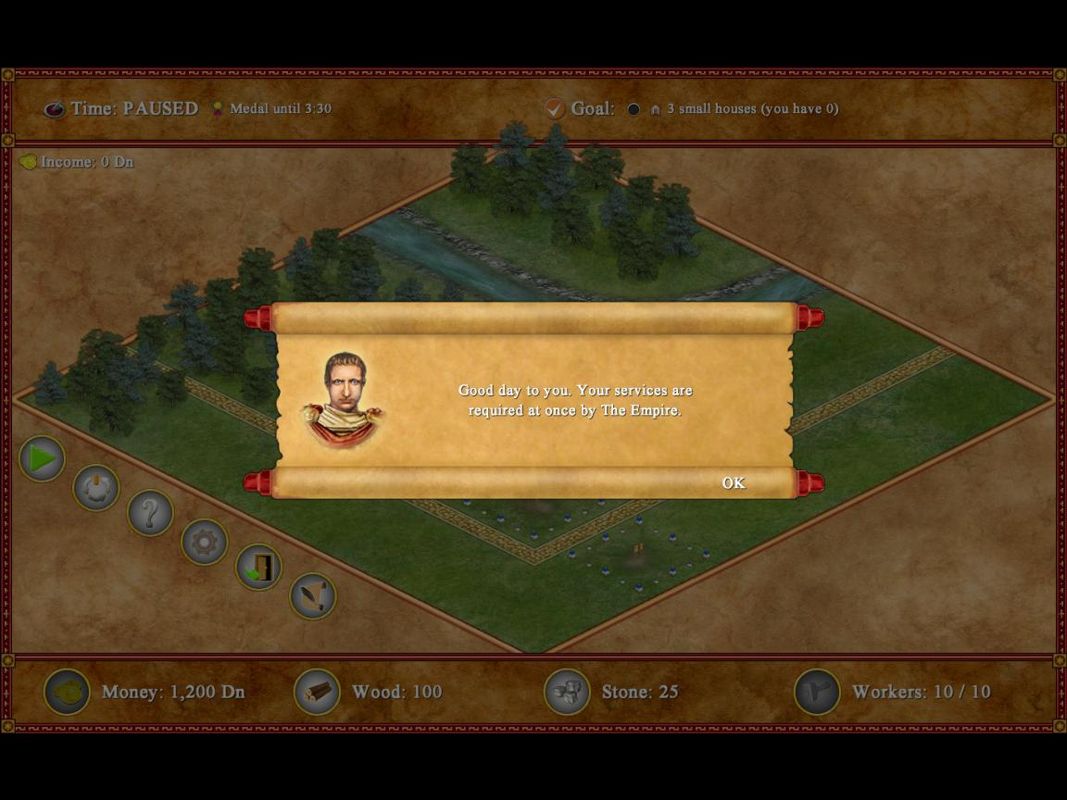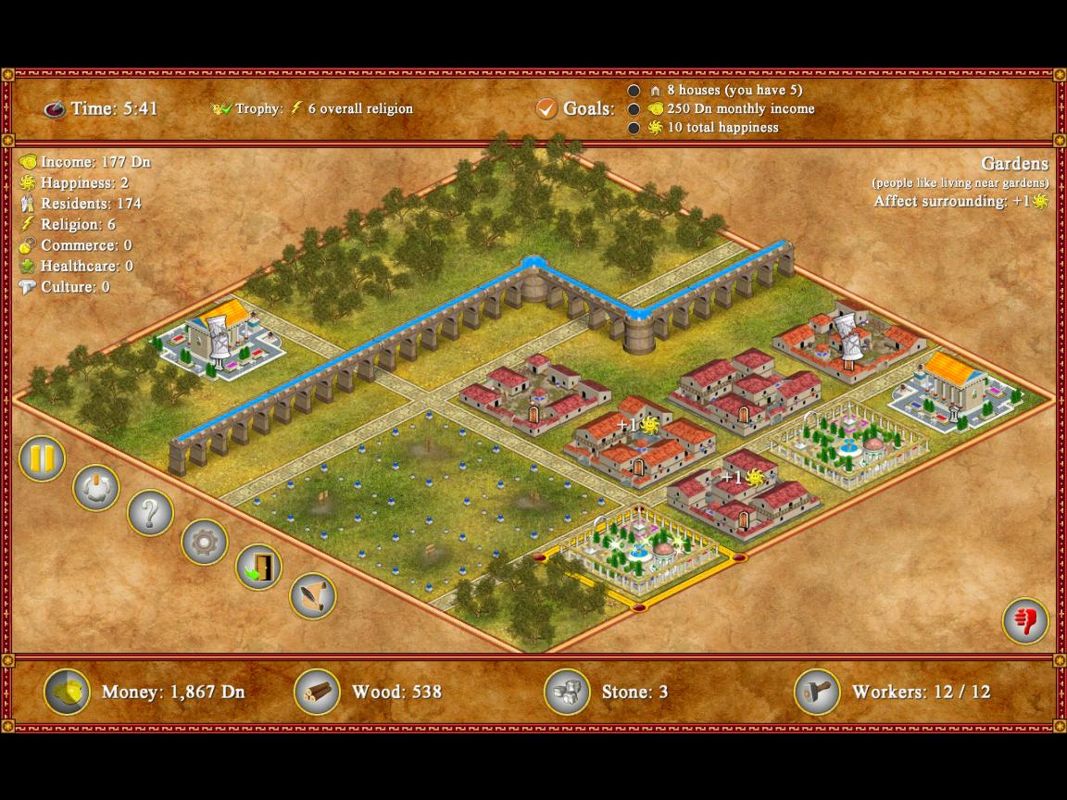Retro Replay Review
Gameplay
Romopolis places you in the sandals of the Imperial architect, tasked with constructing and maintaining the vital infrastructure of a burgeoning Roman province. From laying the foundations of humble dwellings to erecting grand temples, the game’s core loop revolves around resource gathering, blueprint acquisition, and workforce training. Each campaign challenges you with specific objectives—ranging from boosting citizen happiness and increasing commerce to achieving population milestones—often under the pressure of a ticking clock.
The depth of the managerial systems in Romopolis is one of its standout features. You must balance wood and stone procurement, decide whether to import materials or expand your own logging and quarry operations, and determine the optimal workforce training path. Purchasing blueprints for advanced structures and then upgrading your workers to build baths or markets adds a strategic layer that rewards long-term planning and foresight.
Progression feels organic, as early levels introduce basic housing and simple marketplaces, while later scenarios unlock specialized buildings like bathhouses and grand monuments. Each new structure not only improves functionality—raising tax revenue or happiness—but also serves as a visual testament to your growing mastery of Roman engineering. However, the learning curve can be steep for newcomers to city-builder games, so patience and careful planning are key.
Campaign variation keeps the gameplay fresh: some missions emphasize rapid expansion, others focus on social welfare metrics, and a few demand architectural showpieces befitting an emperor’s taste. The variety of objectives and time constraints ensures that no two playthroughs feel identical, providing strong replay value for strategy enthusiasts eager to perfect their provincial empire.
Graphics
Romopolis adopts a clean, isometric viewpoint that effectively captures the grandeur of ancient Rome without overwhelming detail. Buildings are rendered with crisp edges and vibrant colors, making it easy to distinguish between residential blocks, commercial hubs, and religious structures at a glance. The interface overlays resource counts and happiness indicators in a neatly organized HUD that never obstructs the cityscape.
Animations are simple but charming: workers trundle to and from quarries, citizens mill about the plazas, and priests perform rituals at temple steps. These subtle touches breathe life into your city, offering a sense of bustle and authenticity. Zooming in reveals well-crafted textures on stone walls and terra-cotta roofs, while zooming out delivers a bird’s-eye symphony of architectural harmony.
Lighting effects are minimal but effective—daylight shadows shift gradually as you build, and torches flicker along market stalls come evening. While Romopolis doesn’t push the boundaries of modern graphical fidelity, its art direction is cohesive and thematically appropriate, evoking the spirit of imperial Rome in every tile and column.
Performance remains stable even in sprawling cities, with minimal lag or frame drops on mid-range hardware. The UI scales well for various resolutions, ensuring that players on laptops or large monitors can comfortably manage their burgeoning metropolises without squinting or scrolling excessively.
Story
Romopolis does not deliver a narrative in the traditional sense of cutscenes or scripted events; instead, the “story” unfolds through your role as Caesar’s appointed architect. The recurring exhortation “Totus laus Caesar!” keeps the imperial ambition ever present, reminding you that each brick laid and each bathhouse inaugurated serves the glory of Rome.
Campaign briefings hint at political motivations and local unrest, framing your construction tasks within the larger context of provincial governance. Achieving high happiness scores isn’t just about happy citizens—it symbolizes the loyalty and stability of the region. Failing to meet quotas can result in stern admonitions from the Senate, adding a dash of tension to every decision.
The narrative backdrop effectively uses historical flavor without bogging players down in lore. References to Roman deities, tithe collection, and public festivals add color and context to your objectives, making each mission feel like a chapter in the Empire’s ever-expanding saga. While not a story-driven epic, the game’s flavor text and mission descriptions provide just enough storytelling to keep you invested in the outcome.
Overall Experience
Romopolis delivers a robust, satisfying managerial simulation that appeals to fans of historical city-builders and resource-management titles. Its blend of strategic depth, clear objectives, and Roman ambiance creates an engaging gameplay loop that can occupy hours of focused planning and expansion. The variety of campaigns and building options ensures consistent challenge and reward.
While the graphics are not groundbreaking, the game’s aesthetic coherence and intuitive UI make for a pleasant visual experience. The architectural detail, combined with smoothly animated citizens and realistic resource animations, brings your Roman settlements to life. Sound design is unobtrusive, with ambient marketplace chatter and the occasional fanfare reinforcing the imperial theme.
New players may find the learning curve steep, particularly when managing multiple resources and meeting tight campaign deadlines. However, those who enjoy methodical planning and incremental progression will find Romopolis deeply fulfilling. The lack of a traditional storyline is offset by the satisfaction of building a thriving provincial capital under Caesar’s watchful eye.
Overall, Romopolis stands out as a polished and rewarding city-management sim, offering both strategic challenge and immersive Roman flair. Whether you’re redesigning residential districts to boost tax revenue or constructing monumental baths to appease the populace, the game delivers a consistent and engaging experience that will satisfy your inner architect—and your loyalty to the Empire. Totus laus Caesar!
 Retro Replay Retro Replay gaming reviews, news, emulation, geek stuff and more!
Retro Replay Retro Replay gaming reviews, news, emulation, geek stuff and more!









Reviews
There are no reviews yet.